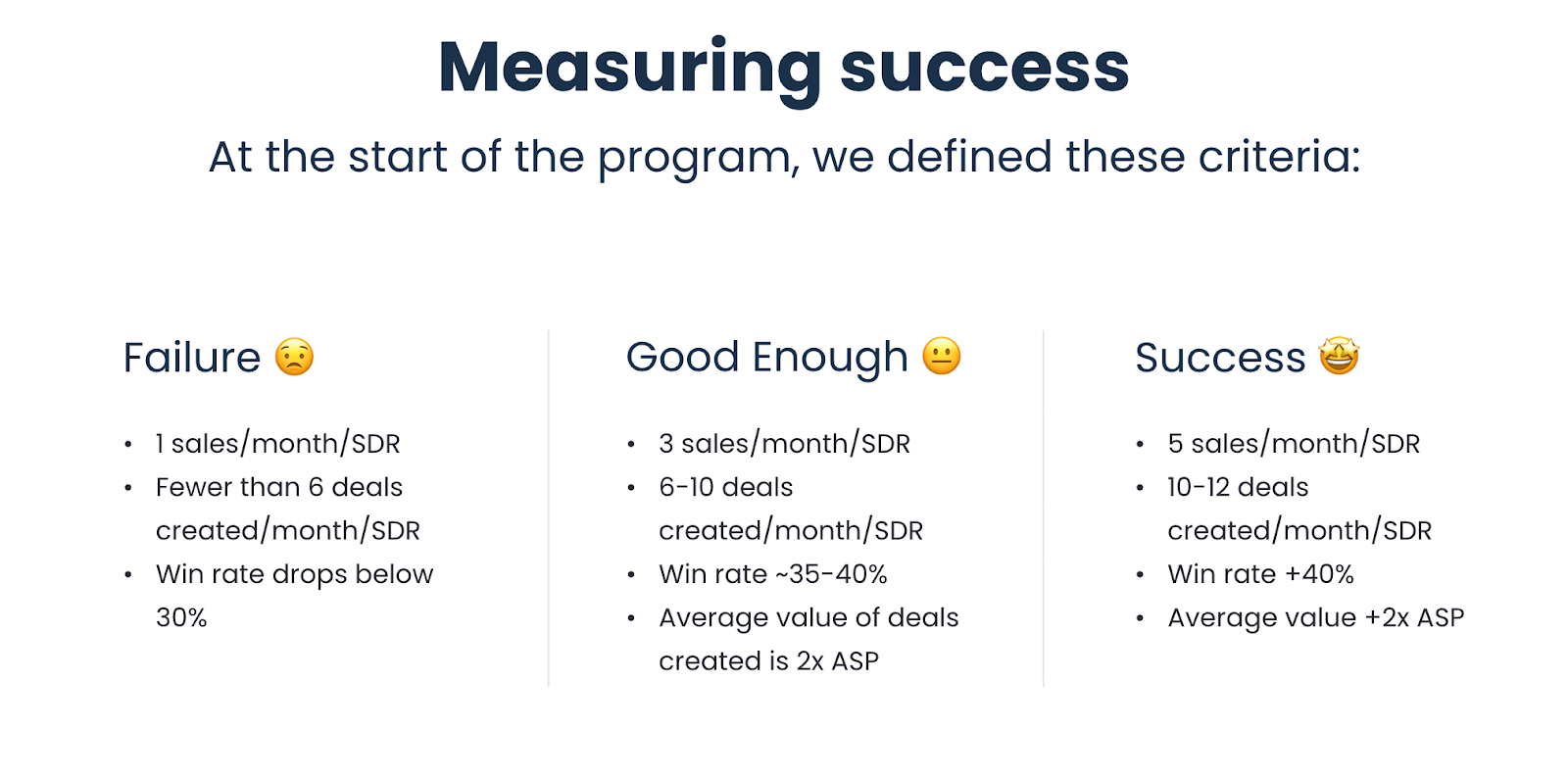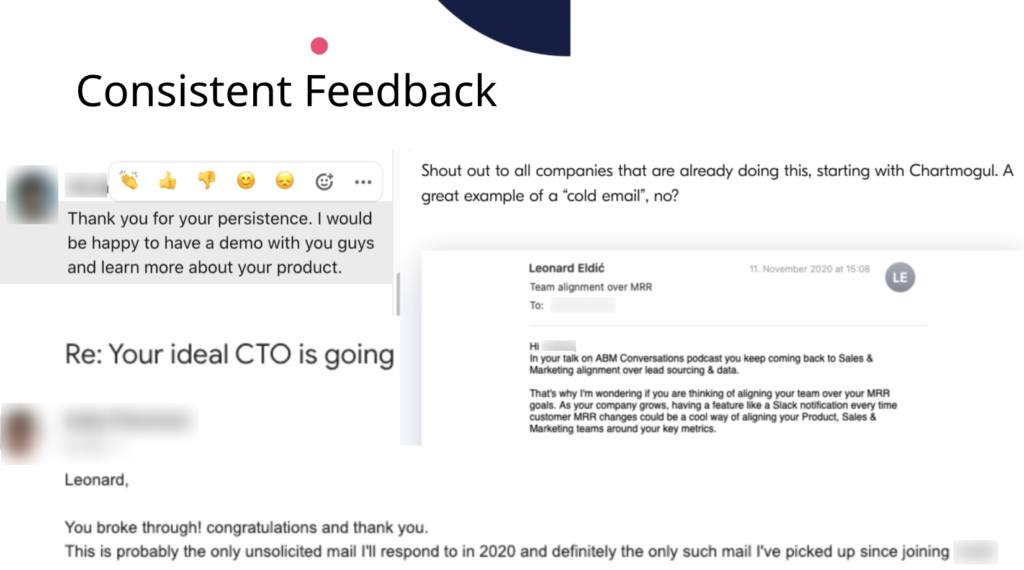ChartMogul is a product-led business. We spend most of our waking hours thinking about how to build a reliable, beautiful product that helps subscription businesses grow faster using their customer and billing data. This mentality extends, of course, to our marketing strategy, which is why folks still print out our cheat sheets and read our weekly roundup.
It also extends to our customer acquisition and sales strategy. More than 90% of our leads come through our 14-day trial. Then, it’s our job to help those businesses get set up, evaluate our product, and ultimately, make a purchase decision. We’ve grown sustainably for six years in this way.
Enter: the allure of an outbound sales motion.
In a recent Act-On and Demand Metric study completed in Q2 of 2016, less than 20 percent of mid-size B2B companies relied on solely inbound or outbound strategies; 84 percent of respondents used some mix of both.
TechnologyAdvice
We know who our prospective buyers are, what is important to them, and how to engage them — after all, we’ve been working with SaaS founders and operators consistently for some time. And importantly, our retention rate for these customers is high.
What would it mean for our business if we could crack outbound sales? If we could reliably generate new opportunities and onboard right-fit customers? Could introducing a new sales motion accelerate our ability to hit our next few revenue targets?
Our outbound sales strategy
We set a plan to find out.
To properly test outbound, we knew that we needed the following:
- Hungry salespeople trained on and devoted to outbound efforts
- Appropriate process and tooling
- Target accounts and reliable contact information
- Personalized, on-brand messaging that illustrates how and why we’re the right subscription analytics partner.
We hired two SDRs (Leo and Verena), trained them on our value proposition, outreach style, and strategy. We consumed the latest and greatest prospecting content from sales leaders like Becc Holland and Josh Braun. We even took Winning by Design’s 4-week course on prospecting.
We decided to focus our efforts exclusively on our best-fit customers: B2B SaaS. We curated a list of these businesses and researched their pricing and billing strategies. Notion housed a dedicated outbound sales playbook, complete with best practices, templates, and creative ideas.
Thomas, our senior sales lead in EMEA, built an impressive process and toolset that automatically sourced contact details for qualified prospects at those businesses.
Before we started, we mapped out the success criteria for measuring outbound — we required consistency, strong sales qualification, and larger opportunities (±2x ASP because many ChartMogul customers pay $100-$250/month).

Our SDR team strived to contact 40 new accounts/week with highly personalized 1-1 messaging.
What worked with our strategy
So, how did it go? The energy invested in personalization proved fruitful. Prospects were receptive.

Our email outreach yielded meetings, and we were able to create qualified opportunities. We coupled email outreach with social, and Twitter proved a hearty avenue for conversations with SaaS founders.
Many SDR teams strive to book meetings, and while that was a top priority for us, we also encouraged prospects to trial our product. This is because many of our buyers prefer to evaluate the capabilities of our product without sales assistance — and ‘being aligned’ with prospects is a core value of our sales culture.
We know that trial users with imported data convert to paying customers at a high rate, so getting prospects to try the product is half the job. We were hoping that an outbound strategy can help us add even more fuel to our product-led motion.
Through effort and determination, we managed to get new users on the product, reactivate old trials, book discovery calls, create opportunities, and win new customers. Importantly we did this in a way that was true to ourselves without burning our brand.
What didn’t work so well…
Unfortunately, we weren’t able to win enough customers to consider the program a success.
In just under six months, we were able to:
- Set 39 total meetings set from an average of 1,650 emails sent/month (~10K emails sent total)
- Create 13 deals (which is less than 1 deals created/month/SDR)
- Convert 7 new customers (which is less than 1 sales/month/SDR) at a win rate of 54% and ASP = 1.5x
You can see that the funnel breaks down from outreach to meetings booked. To counteract this, we increased the volume of outreach after several weeks. Still, we were unable to get enough consistent meetings to ensure the program’s success.
I have a few hypotheses why the program didn’t work as we were hoping it would… though it’s most likely a combination of all of the following:
- B2B SaaS founders are the recipients of lots of outbound, so it’s perhaps a less effective strategy than it was five years ago
- Our messaging and timing was weak
- The order/sequencing of our outreach was lacking
- Prospects on our target list are satisfied with their current state
- Our segmentation was too broad
What’s next?
Continuing the program could mean winning a new large customer here and there, but the allure of outbound promises consistency. And we must employ sustainable strategies that give us energy and keep us focused.
This is, of course, a bit frustrating, but our dedicated attempt was comprehensive enough to learn that outbound sales is not a viable GTM strategy given current inputs. And maybe that’s true for you too.
We hear a lot about the importance of focus for product teams, but rarely for commercial teams. Sales and marketing teams are all too often pursuing a quick win or growth hack instead of sustainable growth via select channels.
It’s essential to keep an eye on your limited resources and use them in the best way possible.
For now, we’ve decided to retire these efforts and turn our focus on opportunities with potential for viral results. Stay tuned!
